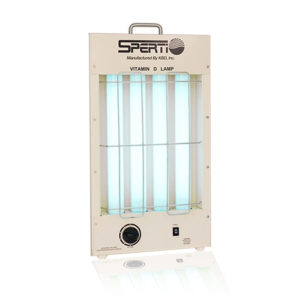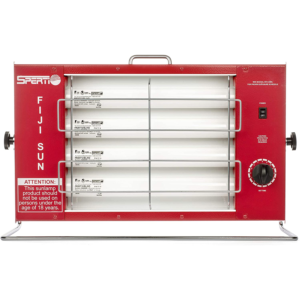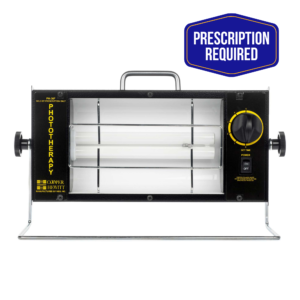What is Vitamin D?
Despite its name, Vitamin D is actually a fat-soluble hormone that our bodies create when UVB rays trigger Vitamin D synthesis in our skin.
Vitamin D is what helps our bodies regulate calcium and phosphate. Vitamin D promotes healthy bones and teeth, supports your immune system, regulates insulin, supports lung and cardiovascular health, and more!
The modern history of Vitamin D
In the 1800s, rickets was very common among children living in industrial and polluted areas. While the cause was unknown then, rickets was a disease caused by Vitamin D deficiency, typically resulting in soft, distorted bones.
The association between lack of sunlight and rickets wasn’t made until the early 1900s, and it wasn’t until the late 1930s that scientists found means to eradicate rickets completely.
In the early 1930s, Dr. George Sperti invented an ultraviolet “Vitamin D” lamp to irradiate milk and add Vitamin D without changing its flavor. Since then, rickets in the United States is a rare occurence, but its estimated that 42% of Americans are still Vitamin D deficient.

How do you know if you're Vitamin D deficient?

There are many signs and symptoms you may be Vitamin D deficient. You can notice one of the symptoms listed to the left, or you can take a home blood test to confirm your levels are low.
Low Vitamin D levels have been linked to:
How can you raise your Vitamin D levels?
If Vitamin D is so important, how can you make sure your body has enough?
The sun
If you’re trying to raise your Vitamin D levels the natural way, most science shows that you should aim to get 10-30 minutes of midday sunlight several times per week. Vitamin D is the only vitamin that can be naturally made by our bodies!
Foods that naturally have Vitamin D
Some foods naturally have Vitamin D in them, but it’s not a wise idea to depend solely on Vitamin D from foods as they typically carry small amounts and would take large amounts of consumption to maintain D levels.
Foods that are fortified with Vitamin D
Thanks to Dr. Sperti’s invention of UV irradiation, we’re not able to add Vitamin D to foods such as cerea, yogurt, and milk! These foods can be a great way to supplement Vitamin D intake.
Oral Vitamin D supplements
Oral Vitamin D supplements can be a great option, but since Vitamin D is typically made by your body, your body may not absorb the full amount of the supplement needed, if any.
A sunlamp
If you’re trying to get Vitamin D the natural way but you work indoors during the day, are homebound, or live in an area that doesn’t get much sunlight, a home sunlamp like The Sperti Vitamin D Sunlamp is a great option for you! A sunlamp can replicate the sun’s UVB output and lets your body create its own Vitamin D.
The Vitamin D-lemma:
A large portion of the world’s population lives in areas where there’s not enough sunlight for UVB synthesis year round. Only those who live in areas near the equator will receive enough sunshine to consistently maintain healthy Vitamin D levels all year. If you live in a region far north or south, the only way to synthesize your own Vitamin D is through a source of artificial sunlight.

The Solution
The Sperti Vitamin D Sunlamp! Whether you struggle with absorbing Vitamin D supplements or you live in an area with little sun, the Vitamin D Sunlamp is an efficient, natural solution to low Vitamin D.
How it Works










